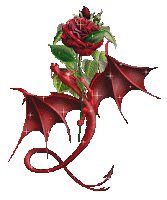Summer makes me think of full moons, sultry evenings, and faeries trooping through the woods---especially on a Midsummer's eve.
 According to poet William Butler Yeats, there are distinctive differences between the trooping, the solitary, and the household fae.
According to poet William Butler Yeats, there are distinctive differences between the trooping, the solitary, and the household fae.
Trooping Faeries are technically the "faerie aristocracy," and dressed in their finest garments, they go parading through the woods in what are called Rades.
 They are, in fact, a faerie court, similar to the Seelie court, and they tend to live in packs. Should one stumbles upon a single trooping faerie, more than likely a few others are around.
They are, in fact, a faerie court, similar to the Seelie court, and they tend to live in packs. Should one stumbles upon a single trooping faerie, more than likely a few others are around.
But beware...they can be good...
Or naughty.
Regardless......
They like to party.
 Solitary Faeries are the opposite of the trooping faeries. They do not care to congregate among their kind. They tend to be a bit more malicious than the trooping faeries, but there are exceptions to this rule. Thus, they are also neither all good nor all bad.
Solitary Faeries are the opposite of the trooping faeries. They do not care to congregate among their kind. They tend to be a bit more malicious than the trooping faeries, but there are exceptions to this rule. Thus, they are also neither all good nor all bad.  Lastly, there are the Household Spirits, which are usually found as single entities in a household, but they are not necessarily solitary. Some have been found to be participants in trooping activities.
Lastly, there are the Household Spirits, which are usually found as single entities in a household, but they are not necessarily solitary. Some have been found to be participants in trooping activities.
This summer, keep an eye out for our Fae friends.































